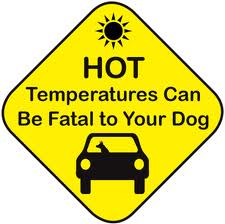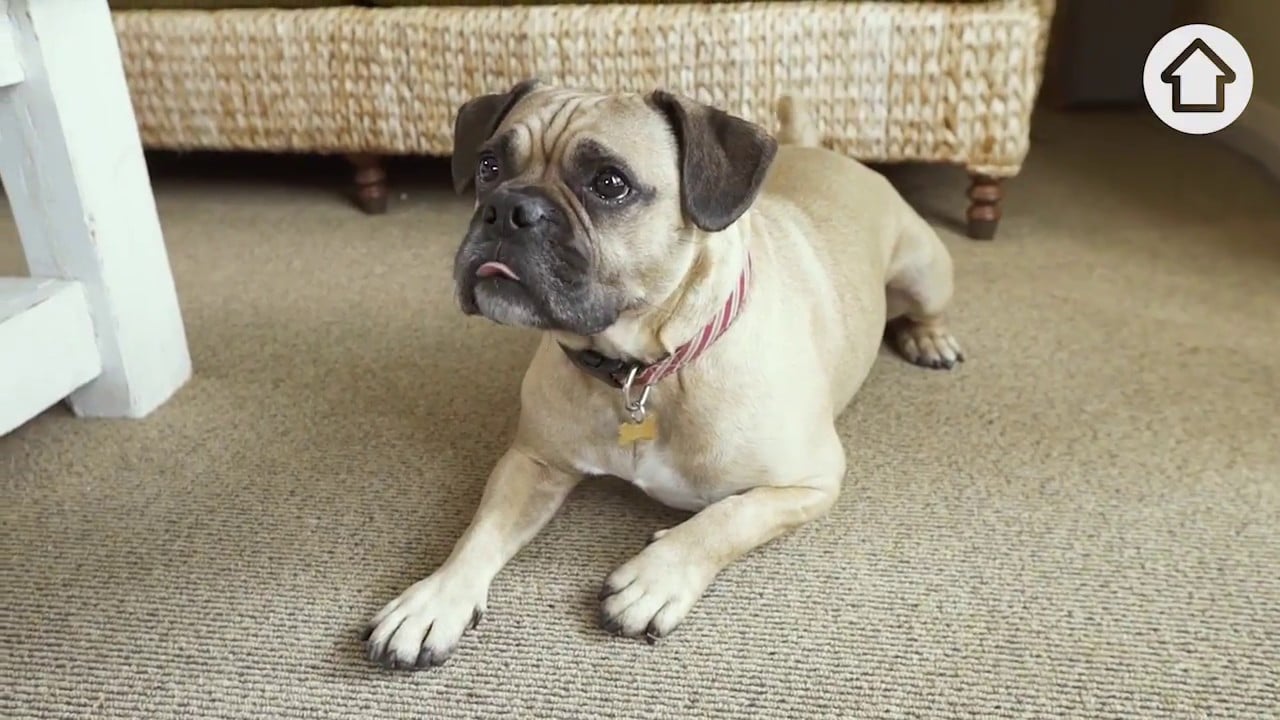
It’s a well-known fact that humans love hot weather. At the first hint of the sun, we dash outside to make the most of the fleeting summer temperatures. Sunbathing, barbecues trip out to the seaside with family and friends…the list is endless. Unlike humans, the heat isn’t suitable for our dogs, who cannot sweat through their skins as we do, so they regulate their body temperatures through their noses and paw pads and by panting to cool down.
To understand how dogs suffer from heatstroke, imagine yourself wearing a thick winter coat in the summer sun’s heat. Symptoms of heatstroke in canines include dribbling, excessive panting and even collapse.
The dangers of an overheated car
You may think you are doing your pup a favour when you bundle him into a hot, stuffy car at the start of a marathon journey up the motorway. Then leave him in the car whilst you stroll around the shops for hours upon end.
The reality is very different for your poor dog.
In hot weather, the temperature rises in the car, turning it into a mini blast furnace. Your dog cannot cope with this sudden increase in temperature and overheats as a result. He starts panting to try to cool himself down, but this is not enough, leading to dehydration and heatstroke. This can be fatal if left untreated.
Each year, dog owners are warned about the dangers of leaving their pets in cars during summer, particularly if there is a heat wave. And, each year, we hear about dogs dying in overheated vehicles.
Remember, dogs cannot cool down as effectively as humans. Parking in the shade or leaving a window open does not make it safe. The message still isn’t getting through. The hot weather is dangerous, even fatal, for dogs. Please leave your dog at home during spells of extreme heat.
Other hot weather risks
Overheating doesn’t just occur in cars. Your dog is also at risk if left in a conservatory or glass-sided building that becomes like an oven in hot weather.
Overweight and older dogs, those with a medical condition and breeds with a ‘squashed face’ (brachycephalic), e.g. bulldogs, are prone to overheating. They are more likely to have breathing difficulties that worsen in the heat.
Protecting your dog in hot weather
Here are a few Dos and Don’ts:
| | Don’t leave your dog in the car during hot weather. Even on an overcast day, the temperature can quickly rise. |
| | Make sure you keep a ready water supply available and make regular stops. |
| | Don’t walk or run with your dog at midday; go first thing in the morning or the evening instead. |
| | Ensure your dog has a cool, shady place to lie in with plenty of water and ventilation. |
| | Don’t leave your dog outside all day in the sun. |
| | Do groom your dog to remove excess hair, keeping him cool in hot weather. |
| | Consider getting some bandana and keep it wet. The water will help keep him calm but ensure you keep it wet. |
| | Do make sure that he has plenty of water. |
| | Add Rock Sulpher to the water. This helps cool the blood and regulate the temperature. |
| | Make up chicken stock (dog friendly) and freeze it into ice cubes as a nice cold reward. |
| | Consider getting some bandana and keep it wet. The water will help keep him cOOL but ensure you keep it wet. |
| | Place a damp towel across the back of your dog. It will help cool them down, especially after a walk. |
If your dog shows signs of heatstroke, take him to a cool place; place a cold cloth on his head to reduce his temperature and give him plenty of water to drink.
Contact your vet immediately if there is no improvement. Urgent First Aid care is essential to cool the dog’s core temperature as soon as possible, and your vet may administer a cold intravenous infusion. Severe damage to the dog’s internal organs can result when exposed to excessively high temperatures, yet you may not see signs of these problems for up to 24 hours after exposure.
Play it cool this summer, and your dog will love you for it.
If you see a dog in distress, please get in touch with your local police station or the RSPCA 24-hour national cruelty and advice line at 0300 1234 999.
Below are some other summer-related articles I hope you will find helpful;

